This article, writen by Ameya Khasnis, was originally published on the Startit website. You can read the Serbian language version here.
Ameya is a senior game designer at Eipix and a regular lecturer at the Eipix Academy. Follow the link to learn more about his game design course.
Video game industry is a major player in the entertainment sector, generating a massive chunk of revenue and constantly growing. In 2016 alone, video games hit $91 billion in revenue. If the current trend continues, a bullish 2017 will break the record, generating even more returns.
However, most of the money is generated by a few successful games. For instance, only 0.5% games released on Steam are responsible for 30% of the platform’s total revenue. Top 25 games made $975 million out of the total $3.5 billion amassed by all the games on offer. This means that the most successful games yield a sizable chunk of total takings.
An insanely large number of games are released every year, out of which only a handful is deemed worthy by the unforgiving gaming community. Unfortunately, not all the good games make money. Only a select few will grab a lion’s share of revenue, while the rest will be left fighting for scraps. Of course, in an industry this large even these “scraps” are often enough to deliver significant profits.
One of the most important aspects of developing a game is the choice of the right monetization strategy. It is not a decision that should be taken lightly, since it can make or break your project. In today’s video game landscape options are numerous and diverse, with more innovative solutions being introduced virtually on daily basis.
In the following lines we will try to cover the basic principles of monetization and highlight some of the more creative solutions implemented in today’s games.

Ameya Khasnis has gathered years of experience working in international game development companies.
Glowing examples
To illustrate the potential of a quality monetization strategy, let’s examine two wildly successful and lucrative games that are actually free. We’ll take a look at the iTunes top 10 list for the highest grossing games. Unsurprisingly, all ten games on the list are free-to-play (F2P) titles, employing the so-called “freemium” model which allows the players to install and play the game for free, while the game earns profits through various in-app purchases (IAPs).
Just to get an overall sense of these earnings, we’ll take the No. 1 game on the list and pair it with a slightly less successful one at No. 7. The ubiquitous Clash of Clans reigns supreme, raking in $1.9 million PER DAY on average! Six spots below, Candy Crush Soda Saga is capable of earning a “measly” $250K daily. Still, not bad for a game with a face value of nothing.
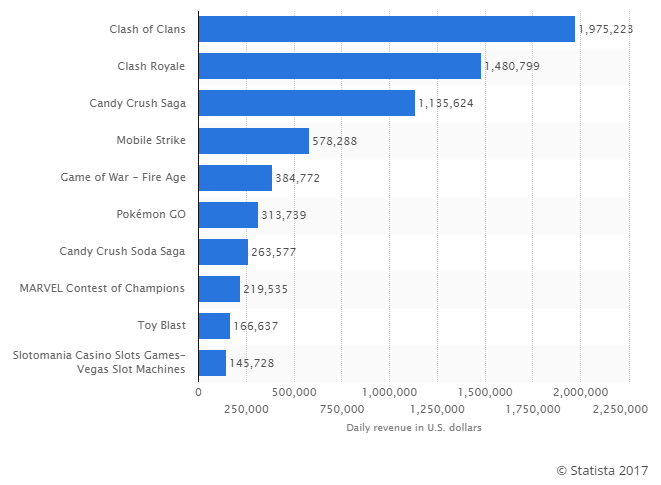
List of top-grossing games on the iTunes app store.
When to think about monetization?
To answer the question asked above – NOW! Seriously, if you’re contemplating a game idea and you still haven’t considered its monetization options, your thinking is incomplete.
Monetization hooks need to be planted right at the conceptualization stage. The more the monetization technique is a natural extension of the game’s core mechanic, the more effective it will be. It becomes inherently difficult to insert monetization hooks once the game is in production.
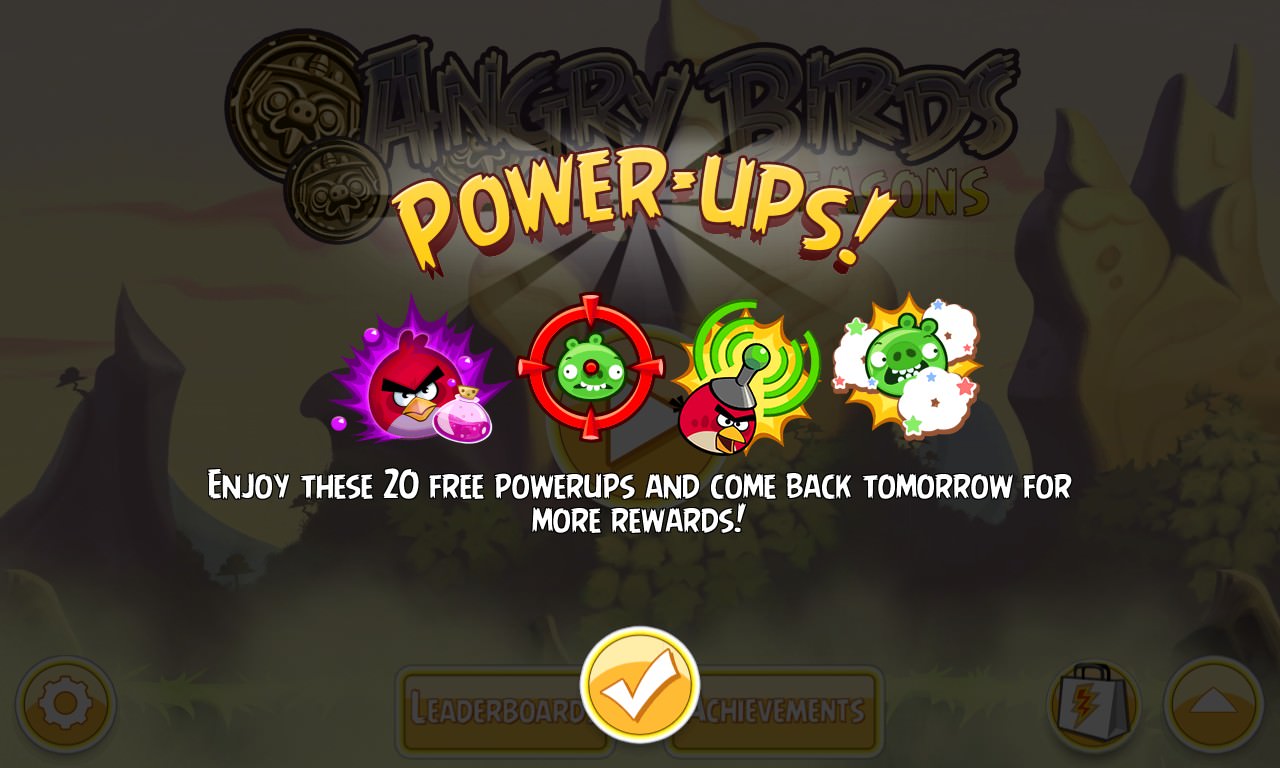
Angry Birds uses daily rewards to keep its players coming back.
Before you enter the design process, there are three significant questions you must answer:
- What is your potential market share?
Based on its genre, you should try and assess the potential market share of your game. Checking the competition is of paramount importance. Knowing what has worked and what has tanked on the market provides additional design perspectives . - What will be your distribution channel?
Distribution opportunities for targeted platform needs to be explored. Online distributors usually take around 30% of generated revenue. If the distributors take a lesser share, it usually means the market penetration is also low. Choice of platform and proper distribution channel will affect the monetary gains after the release. - What is your target audience?
Understanding your target audience is critical. Apart from their age and sex, understanding of your audience’s geographical location is also of utmost importance. The game price or the value of IAPs should be determined based on the spending limit of your target audience. Prices that are too high or too low can directly diminish the monetization potential of your game.
Monetization strategies
The first and main choice of your monetization strategy is opting for the premium or the freemium model. Let’s take a closer look at the two.
Players needs to pay upfront for a premium game. The biggest issue for a premium game is the cost barrier. You must convince the players that your game is worth the price, which, with limited promotional means, may prove to be a difficult task.
Even if the players choose to accept the cost barrier, generating additional revenue becomes challenging. Downloadable content can increase profits, but offering too much additional paying content may prove detrimental. If the players feel that they are being cheated out of content even after paying the asking price, the gaming community will hate the game and brand value of the studio will eventually be diminished.
With the boom of online gaming, some premium games have even started implementing F2P mechanics, such as virtual currencies. This essentially creates a modern-day hybrid, a “pay now, pay later” type of arrangement. For instance, GTA Online offers “shark cards” that eliminate the need for “grinding”, completing boring, painstaking and long lasting tasks in order to earn in-game currency.
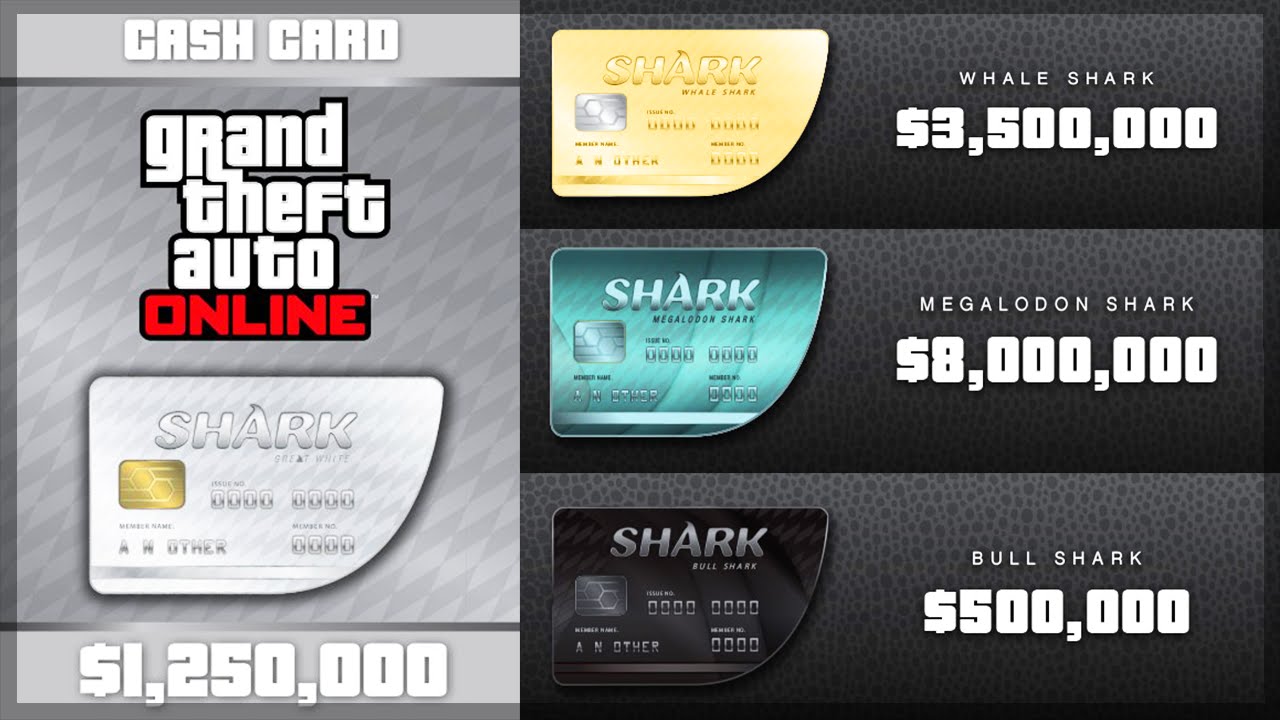
Shark cards in GTA Online represent a classic F2P mechanism in a premium game.
F2P games, on the other hand, eliminate the cost barrier issue by offering the game for free. This, however, creates two pertinent problems: retention and conversion: when the entire functionality of the game is given away for free, the developer can make money only if the players are engaged long enough to eventually pay.
The four pillars
When considering any F2P title, you will find these four sales options: content, convenience, competitive advantage, and customization. Each category appeals to one of the four player types described by the respected British video game researcher Richard Bartle.
Content appeals to explorers. However, it can be the most difficult and least lucrative to monetize, due to its durable nature. Durables create a finite cap on spending, as they can be purchased only once. Being the most common monetization mechanic, convenience provides the player with a chance to skip over mundane tasks that require time and dedication. Single use consumables like speed ups, lives and powerups appeal to achievers. Consumables can be purchased repeatedly by the player, making them profitable in the long run. Thirdly, competitive advantage is anything that once purchased gives the player a winning edge either against the game or other players. This is most popular amongst the killers, who generally have a higher motivation to spend. Both consumables and durables are used in this category. However, if not balanced optimally, it can lead to a “pay to win” scenario. This would drive away a sizable chunk of non-paying users, leaving no one left to play with for paying players. This would destroy the monetization potential completely. Lastly, customization appeals mostly to socializers who prefer creative expression by fashioning and personalizing anything in the game, typically their avatar, pets, abode, territory, or any other element a player can have an emotional bond with. A single game can contain all four monetization techniques.
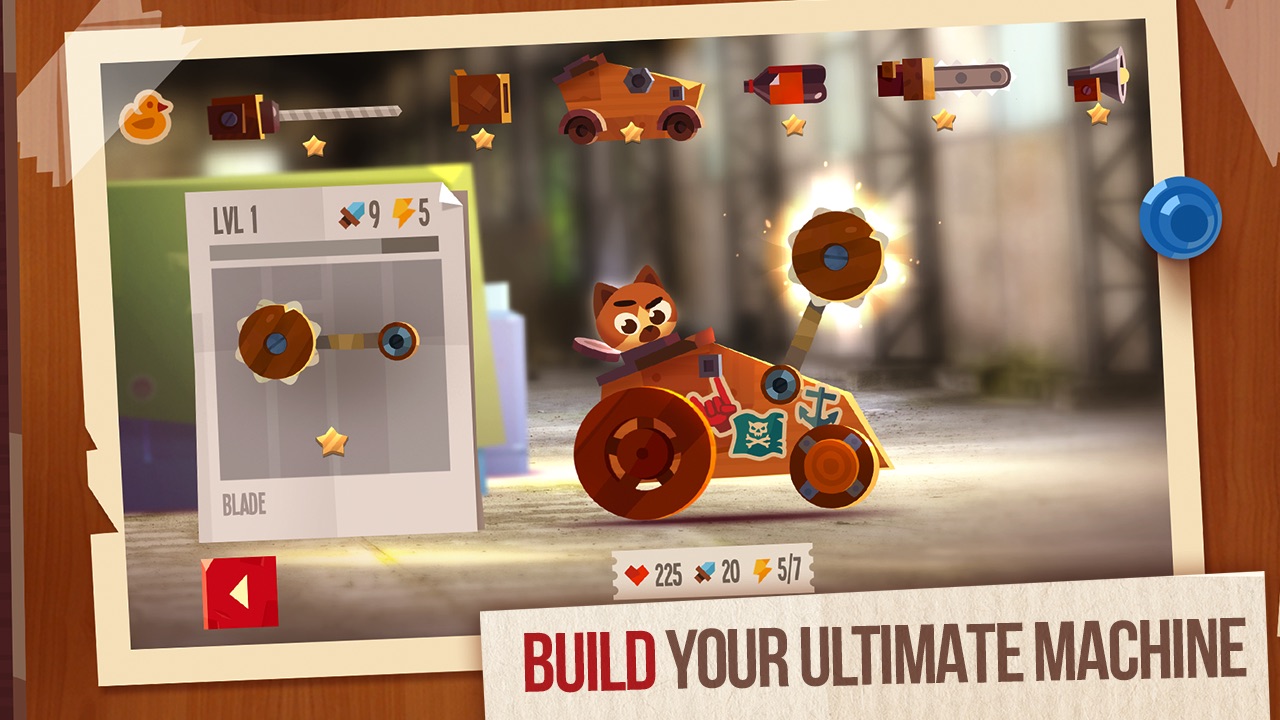
C.A.T.S. is all about gathering items to upgrade weapons, and money can speed up the process.
In order to creatively implement means of monetization, in-game demand must be identified. Monetization hooks tightly woven around this demand are always effective. For instance, in C.A.T.S., a player is randomly given items required to build a vehicle, thus creating high demand for special items. Players can choose between grinding incessantly in order to obtain these special items, or purchasing high value chests that significantly increase their chances of getting the desired special items. Players can never directly purchase a specific special item, though, leaving it to lady luck to help them get the items they want. Hence, the technique of chance and collection is creatively utilized in this game. In games like Clash of Clans and Game of War, resource generation takes a lot of time, making the resources extremely valuable for those looking to advance and upgrade. But resources can also be lost in raid. In such a case, vacation period, temporary shields, or protective consumables prove to be high value purchase options. Similarly, VIP memberships providing high drops of valuable game items or boosts (permanent or temporary) can prove to be highly effective sales as well.
Additional tips
Every country has a different standard of living which has a direct effect on the spending pattern, especially in games. North Americans and western Europeans traditionally tend to spend more on video games, whereas, South American and Asian countries tend to spend the least. If the cost of IAPs is not properly adjusted, a huge loss of revenue is the most likely outcome. Gathering data on the population of the geographical area in which you plan to launch is crucial in adjusting the cost of IAPs. Population, internet and credit card penetration rates, along with revenue generated by games, allow the developer to make calculated choices. Moreover, Apple offers IAP pricing tiers specific to different countries. For instance, the cheapest purchase available in the US app store is $0.99, whereas in India it is set at about $0.20. Low price point in India allows the developer to generate a huge number of in-game transactions, and due to India’s gigantic population, low value transactions can account to overall high profits.
On average, only 5% of app users pay money. Out of these 5%, only 10% of spenders account for 70% of total revenue. These 10% are “whales”. The rest of paying players based on their spending activity can be divided into “dolphins” and “fishes”. However, out of the remaining 95% non-paying users, some would actually like to pay, but they can’t, due to unavailability of payment options like credit cards. These players are “tadpoles”, as they would be able to contribute in smaller amounts, but their sheer numbers can provide a huge positive bump in game earnings. Having alternative modes of payment could be quite useful in targeting this segment of the market.
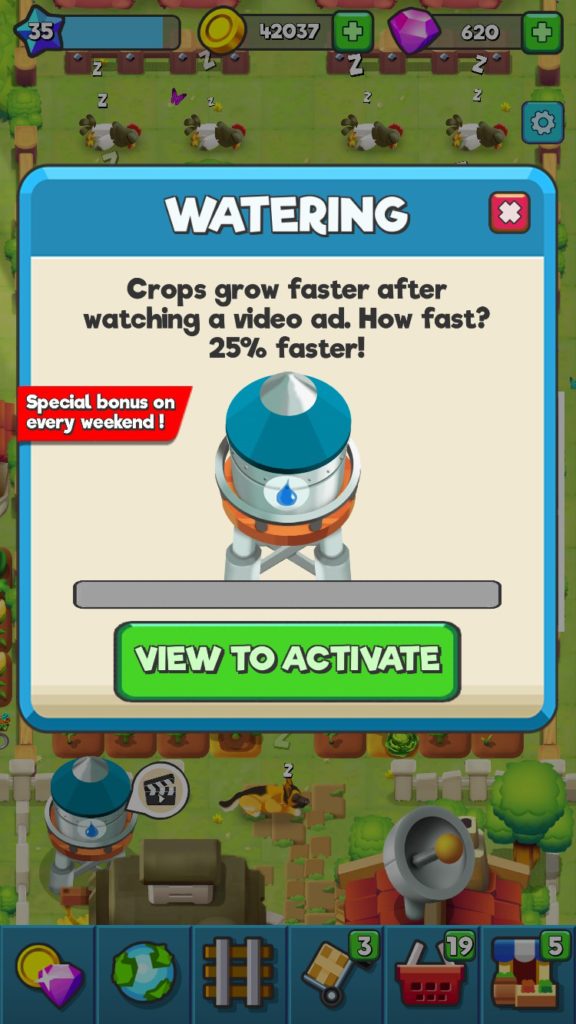
Example of a video ad reward in Eipix’s F2P game Farm On!
In-game video advertisements can be an effective additional source of revenue, as it generates revenue even from non-paying players. Faced with certain pinch points in the game, many players will be willing to watch a 30 second video advertisement in exchange for valuable game resources. The more video ads players consume, the better it is for the developer. However, it can turn out to be a double-edged sword if the value of rewards isn’t properly balanced. Make their value too small and the players will lose the incentive to watch video ads. Make the rewards too big, and it can cannibalize the paying players. As a general rule for preventing these scenarios, video ad rewards should never be more valuable than the IAPs.
Algorithmic personalization is still not widely used in games. However, tailoring personalized game experiences, dynamic difficulty levels and game economy adjustments will be the norm in the nearest future. Big data is here to stay. Many e-commerce giants like Amazon use user data and machine-learning techniques to customize their offers for individual users. Similarly, targeting specific player segments with special offers can and will be effectively implemented in games.
Out of the box!
Having a creative core-loop, or crazy-yet-interesting game features, provides a breeding ground for out of the box monetization techniques. Pokémon Go! does it beautifully with its Incense feature. Incense attracts Pokémon for 30 minutes in its area of initiation. Cafes and restaurants use them to attract players to their location. To catch Pokémon on their premises, players will need to buy something from business owners. Niantic has become notorious for employing monetizing sponsored locations, but can you truly blame the company for wanting to maximize its monetization options.
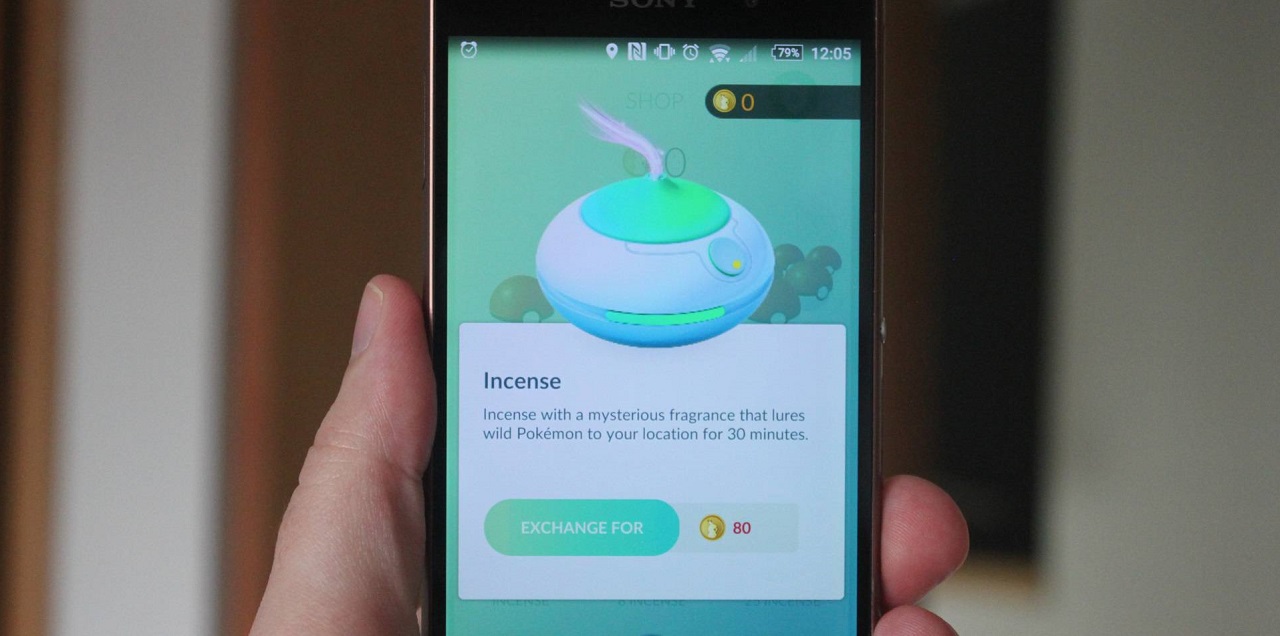
Pokemon Go’s Incense feature opens the door for very creative, if controversial monetization methods
Guitar Hero Live is a premium game, but it monetizes even after player buys the game by offering guitar controllers. It also offers 5 million songs, but not all songs are available at all times. Some are locked depending on player’s progress, some are available at GHTV, and some are simply locked. Players can purchase special hero cash in the game store in order to purchase specific songs. This works great for parties, where only a few dollars can give you unlimited access to virtually any song you can think of.





